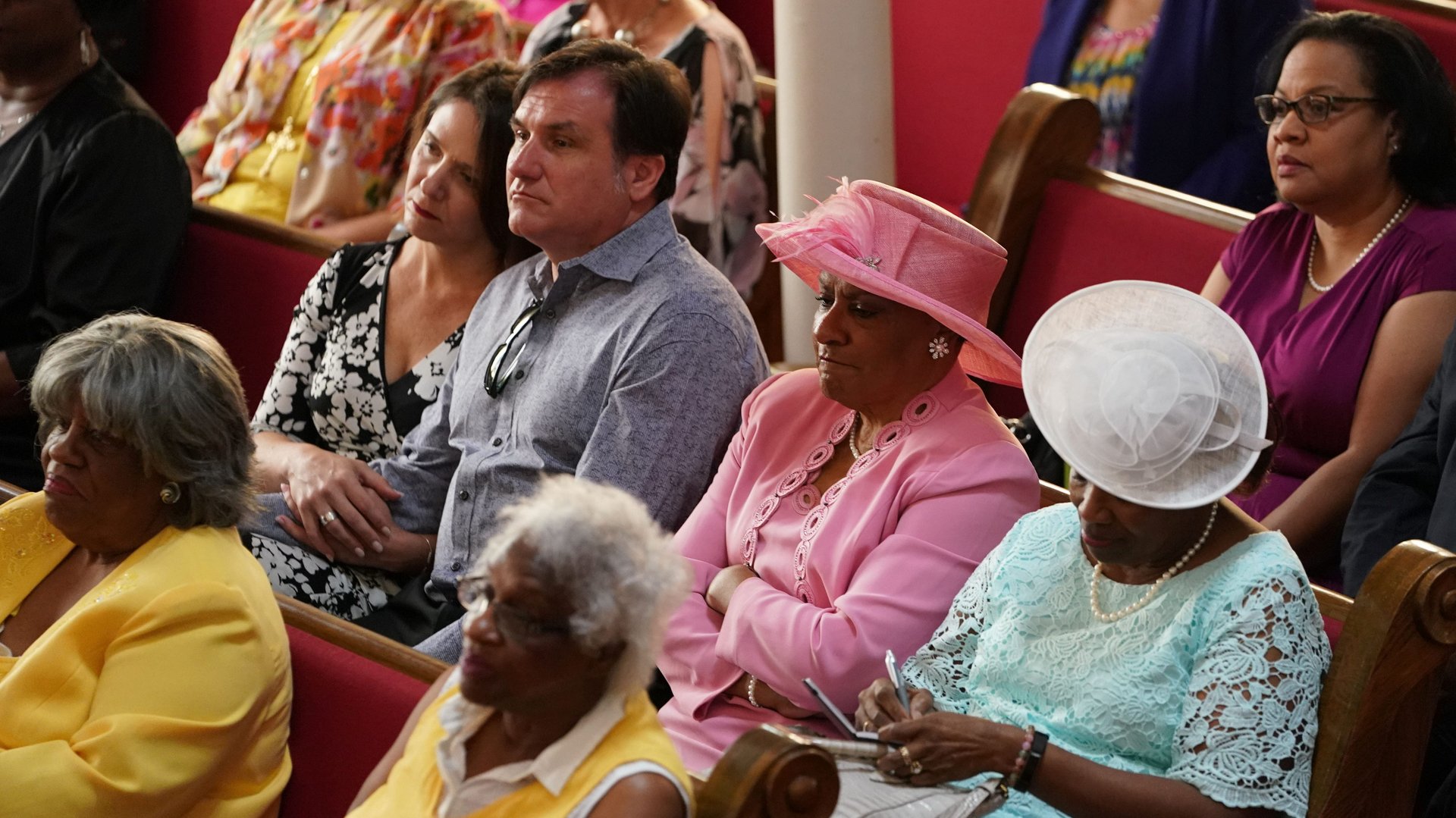Online sermons reveal differences in how Christians in the US worship
The median Catholic sermon is roughly half the length of an episode of a sitcom, while services from Evangelical and historically black churches run about as long as your average podcast.


The median Catholic sermon is roughly half the length of an episode of a sitcom, while services from Evangelical and historically black churches run about as long as your average podcast.
At least, if you’re getting your religion in digital form. More and more Christian houses of worship are live-streaming their services or offering them on YouTube or in audio recordings, and on Monday (Dec. 16), the Pew Research Center released an analysis of 49,719 of those online sermons.
The digitization of religion offers an opportunity to understand how faith is practiced around the world—and reveal what aspects resonate with a modern-day audience. Back in 2014, Pew found that one in five Americans shared their religious faith online in some form, either through social media or apps. Meanwhile, churches, mosques, and synagogues have ramped up their online presence in order to reach a public increasingly uninterested in religion. In 2019, 50% of Americans surveyed by Gallup reported attending a church, mosque, or synagogue, an all-time low.
Dennis Quinn, Pew’s lead researcher on the project, told Quartz in an email that the new project wouldn’t have been possible if churches didn’t post their sermons online. Using the Google Places API, Pew first identified churches on Google Maps, then navigated to their public websites. With a custom web scraper, Pew gathered digital audio and video files of sermons from the sites of 38,630 American churches.
Restricting the study to online sermons posed its own limits, Quinn said. “The congregations that shared these sermons are by definition technology-enabled. They’re also larger and more urban—and of course, these are the sermons they chose to share,” Quinn wrote in a blog post.
Still, that kind of data is a sociological treasure trove. Analyzing data from the 6,431 religious congregations represented, researchers from Pew’s Data Labs team discovered that the median duration of online services can vary widely across faiths. Evangelical and historically black Protestant churches offer up the longest sermons (a median of 39 minutes and 54 minutes, respectively), while Catholic sermons are at a median of 14 minutes.
The report’s findings also revealed key differences in messages delivered across denominations—although their conclusions likely won’t surprise followers.
Pew looked at the most distinctive terms used in sermons held by historically black, Evangelical Protestant, mainline Protestant, and Catholic churches. A congregant of a historically black church is eight times more likely to hear the phrase “hallelujah” than members of other Christian branches. Catholic parishioners, meanwhile, are more likely to hear phrases like “homily” (a brief commentary delivered by priests) and “Eucharist” (a ceremony common in Catholic churches that commemorates the Last Supper).
Evangelical sermons are three times more likely to contain a mention of “eternal hell” than non-Evangelical churches. But it was still used sparingly, appearing in only 10% of the sermons held by more than 2,000 Evangelical churches analyzed in the study.
In fact, the most commonly used terms used across all traditions didn’t evoke fire and brimstone at all. “Good” and “love” appeared in 99% of sermons across all traditions.
Unsurprisingly, God was mentioned in every single one.